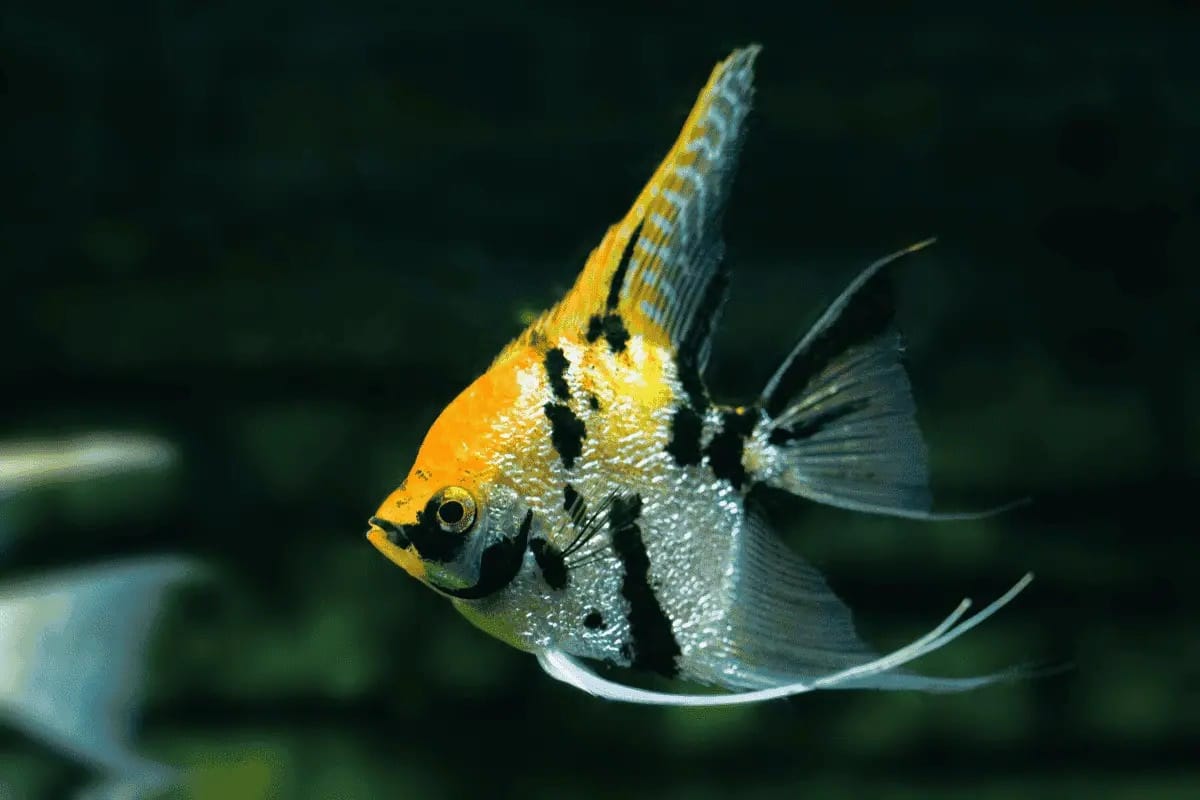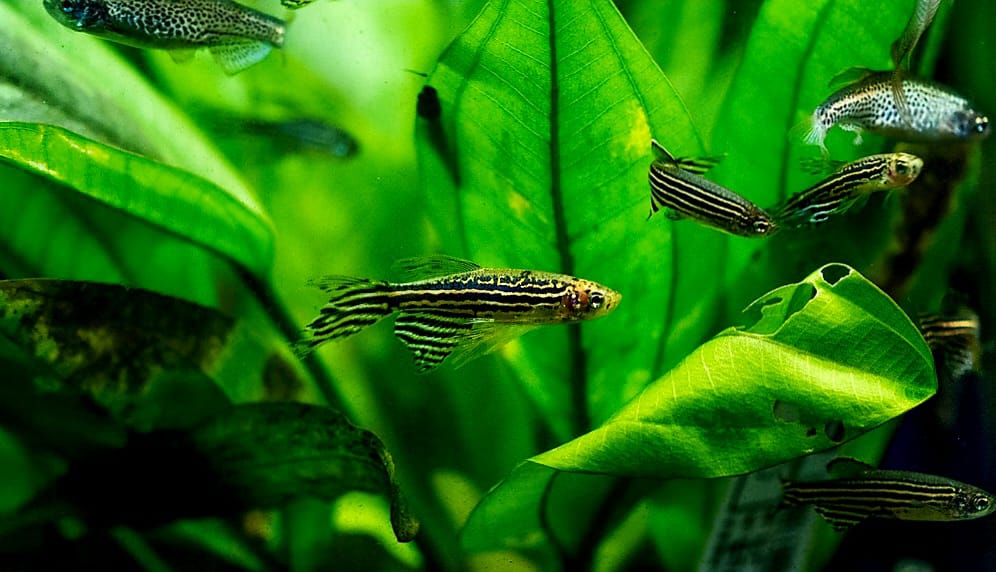Molly fish are a popular choice among freshwater aquarium enthusiasts due to their hardy nature, active behavior, and diverse color variations. They are easy to care for and make a great addition to community tanks.
This guide will cover everything you need to know about Molly fish, including their history, tank requirements, diet, social traits, and common health concerns.
Table of Contents

Introduction
Molly fish are live livebearers, meaning they give birth to free-swimming fry rather than laying eggs. They are well known for their adaptability and ability to thrive in various water conditions.
However, like any pet, they have specific care requirements that must be met to ensure their health and longevity.
History and Origin
Molly fish (Poecilia spp.) are native to the warm, slow-moving waters of North, Central, and South America. They are commonly found in freshwater streams, rivers, and coastal brackish environments.
Over time, selective breeding has produced various Molly fish strains with unique colors and fin shapes, making them a favorite in the aquarium trade.
Why Molly Fish Were Created
Molly fish were originally kept and bred for their adaptability and aesthetic appeal. Their ability to thrive in both freshwater and slightly brackish water made them an ideal choice for fishkeepers.
Today, they are primarily bred for their beautiful colors and hardy nature, making them perfect for both beginner and experienced aquarists.

Freshwater or Saltwater Fish?
Molly fish are freshwater fish, but they have a high tolerance for brackish water. Some aquarists even keep them in slightly salty environments to promote better health and vibrant colors. However, they should not be kept in full saltwater conditions.
Physical Characteristics
Molly fish come in a variety of colors and fin types. Some of their defining characteristics include:
- Size: Typically grows between 3 to 5 inches, depending on the species.
- Color Variations: Available in black, silver, gold, dalmatian, and lyretail varieties.
- Fin Types: Includes short-finned, sailfin, and lyretail varieties.
- Lifespan: With proper care, mollyfish can live between 3 to 5 years.
Choosing the Right Molly Fish
When selecting a Molly fish, consider the following:
- Tank Size: A minimum of 10 gallons is recommended, with larger tanks needed for groups.
- Health: Choose active fish with clear eyes and smooth scales.
- Group Size: Mollies are social and do best in small groups.

Diet and Nutrition
Molly fish are omnivores and require a varied diet for optimal health. Their ideal diet includes:
- High-quality flakes or pellets formulated for tropical fish.
- Vegetable matter such as blanched spinach or zucchini.
- Live or frozen foods like brine shrimp, bloodworms, and daphnia for added protein.
- Feeding Schedule: Feed small amounts 1-2 times per day.
Fun Facts About Molly Fish
- Molly fish can adapt to both freshwater and brackish water environments.
- They are livebearers, meaning they give birth to live fry instead of laying eggs.
- Mollies can change gender under specific environmental conditions.
- They are known to eat algae, helping to keep the tank clean.
Molly Fish Tank Requirements
- Water Quality: Clean, dechlorinated water with a temperature of 72-82°F (22-28°C).
- Filtration System: A gentle filter is recommended to maintain water quality.
- Tank Size: At least 10 gallons, with additional space needed for groups.
- Plants and Hiding Spots: Mollies enjoy live plants and decorations for shelter.

Filtering System
A proper filtering system is crucial for mollyfish health. A sponge filter or a low-flow filter is ideal, as strong currents can stress the fish. Regular maintenance, such as water changes and filter cleaning, is necessary to keep water conditions stable.
Is It a Fighting Fish?
Molly fish are peaceful by nature and do well in community tanks. However, males can sometimes display territorial behavior, especially when competing for females. Providing ample space and hiding spots can help reduce aggression.
Types of Fish That Can and Cannot Be Bred with It
Compatible Tank Mates:
- Guppies
- Platies
- Swordtails
- Corydoras Catfish
Incompatible Tank Mates:
- Aggressive fish like Cichlids
- Fin-nippers such as Tiger Barbs
- Betta fish (males may be territorial)

Molly Fish Behavior and Social Traits
Molly fish are active swimmers and highly social. They thrive in groups and display interesting behaviors such as:
- Schooling Behavior: They prefer the company of their own kind.
- Exploring: Constantly moving and foraging for food.
- Livebearing Reproduction: Females give birth to live fry, which can be raised separately to prevent predation.
Common Molly Fish Health Problems
- Ich (White Spot Disease): A parasitic infection causing white spots.
- Fin Rot: Bacterial infection that damages the fins.
- Swim Bladder Disease: Causes buoyancy issues and difficulty swimming.
- Preventative Measures: Maintain clean water, provide a balanced diet, and monitor fish for signs of illness.
Challenges Breeders Face
- Managing frequent breeding, as Mollies reproduce rapidly.
- Preventing overpopulation in tanks.
- Ensuring proper care and nutrition for fry.
- Dealing with potential genetic defects due to inbreeding.
Advantages for Molly Fish Breeders
- High demand for unique color variations and fin types.
- Mollies are relatively easy to breed, making them a good choice for beginners.
- A rewarding experience for hobbyists who enjoy raising livebearers.

Molly Fish Myths and Misconceptions
- Mollies Can Live in Bowls: They need a properly filtered tank.
- Mollies Don’t Need a Heater: They require stable warm temperatures.
- Mollies Are Always Peaceful: While generally peaceful, males can be territorial.
Learn More About Fish Breed
Understanding different fish breeds is essential for providing the best care, as each species has unique requirements for habitat, diet, and social behavior. If you are interested in learning more about “Goldfish, check out our in-depth guide: Goldfish Care Guide”.
If you like to know about Betta Fish you can read our article about batta fish “Betta Fish for Beginners: A Complete Care Guide“
Also, Guppies are one of the most popular freshwater aquarium fish if you like to know about Guppy Fish you can read our article “Guppy Fish for Beginners: Why They’re the Perfect Starter Pet“ and if you are a Neon Tetras lover you can learn about them from our article of “Neon Tetras Care Guide: Tank Setup, Diet & Health Tips“

Final Thoughts
Molly Fish are an excellent choice for both beginner and experienced aquarists due to their hardy nature and social behavior. With proper care, a well-maintained tank, and a balanced diet, they can thrive and bring vibrant energy to any aquarium.
Whether you are looking for an easy-going community fish or a breeding project, Mollies offer plenty of opportunities for enjoyment. Understanding their needs and challenges will ensure a healthy and long-lasting relationship with these fascinating freshwater fish.
FAQs
Why is Molly Fish aggressive?
Mollies can be territorial, especially in overcrowded tanks or during breeding.
How many mollies should be kept together?
It’s best to keep at least 3–4 mollies to reduce stress and aggression.
Will molly fish eat other fish?
Mollies don’t hunt fish, but they may eat small fry or weakfish.
Do mollies clean the tank?
Mollies eat algae and leftover food, but they don’t replace proper tank cleaning.



